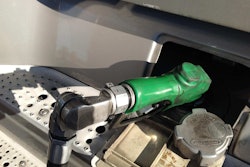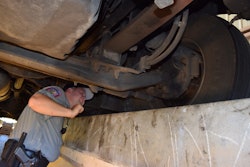Daimler Trucks North America (DTNA) announced Monday it will make its first delivery of plastic parts produced using 3D printing technologies to its customers in the coming weeks as part of a pilot program, adding it is confident these new technologies will soon play a significant role in the industry.
DTNA sees 3D printing as an opportunity to better serve its customers, particularly those customers in need of parts that have been difficult to provide through traditional supply chain models, like parts for older trucks or components with low or intermittent demand.
This announcement also comes on the heels of FTR’s Eric Starks’ prediction at the CCJ Symposium that one day trucks could have 3D printers outfitted within them, allowing them to print parts from the road.
During this pilot phase, DTNA says it will release a controlled quantity of 3D printed parts and will invite feedback from customers and technicians that receive them. DTNA will also collect data on the parts performance as well as assess potential future demand for 3D printed parts.
“The addition of three new PDCs coupled with dedicated delivery service puts us on the path toward achieving this objective. We realize that we must continue to innovate and we will invest in new processes including 3D printing,” says Jay Johnson, general manager, aftermarket supply chain at DTNA. “What DTNA is launching today with 3D printing is only the beginning as we continue to develop this technology in our quest to be the benchmark for parts availability.”
To print the parts, DTNA partnered with the 3D printing service bureau, Technology House, which has over 20 years of experience in additive manufacturing. Together, the companies say they have made the first parts available to customers with Selective Laser Sintering. The SLS process refers to layering powder in a print chamber and then “selectively” melting a pattern with lasers before adding the next layer. The 3D printed parts have been validated to meet durability requirements and many will appear no different to the untrained eye. During the pilot phase, parts to be printed include nameplates, map pockets, and plastic covers, DTNA says.
Additionally, parts eligible for 3D printing are also being stored in DTNA’s digital warehouse.
DTNA says this allows a part to be printed on demand with shorter lead times. Without the need to maintain tooling, these parts will remain available to customers when needed. On-demand 3D printing also removes the need of holding physical inventory, the company says. Currently, the order process takes 2-4 weeks, but once the program is fully launched, DTNA says parts will be able to be shipped in just a few days. This capability has the potential to increase uptime for our customers who may otherwise experience long wait times for a hard-to-find part, the company says.













